The Big Read: Beyond IRs and new attractions, how can Singapore draw more tourists and make them stay longer?
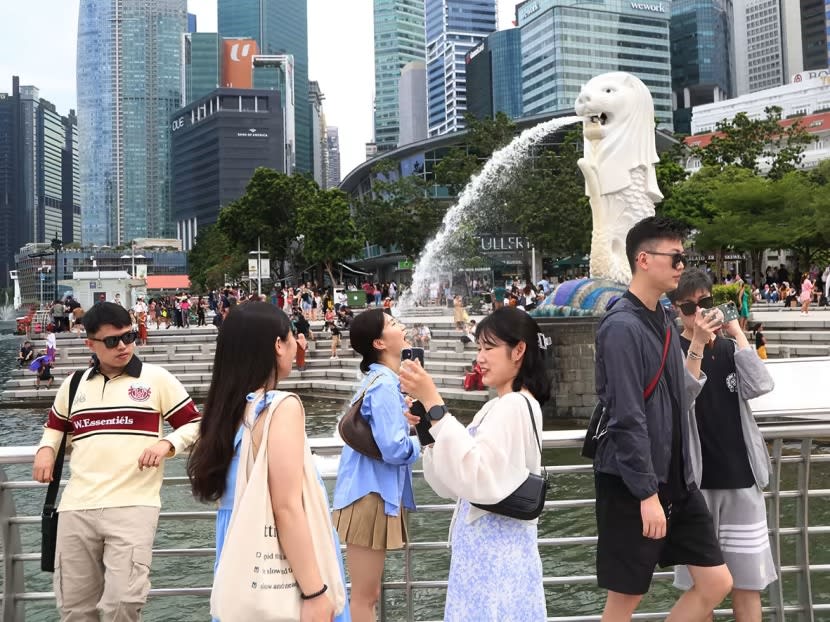
In the first quarter of this year, Singapore had 2.91 million visitor arrivals, with 1.02 million visitors in March alone. (Photo: TODAY/Raj Nadarajan)
- Singapore's tourism arrival is set to return to pre-pandemic levels by 2024, after receiving more than 1 million visitors in March 2023 alone
- But the pandemic has changed tourism patterns, including a preference for single-destination holidays and increasing interest in eco-tourism
- Singapore's integrated resorts — touted as a "game changer" when they opened in 2010 — are also set to face increased competition as Japan and Thailand start plans to build their own resorts
- For Singapore to stay relevant and continue drawing tourists, the answer does not lie in building another major attraction, said experts
- Rather, packaging attractions together and marketing Singapore better will be key to shedding the country's image as a layover destination and getting travellers to stay here longer
SINGAPORE: While the humidity and heat may have bathed them in sweat, Australians Bryan and Christine Mansfield were smiling as they made their way to the Gardens by the Bay on Thursday (May 4).
Their three-day holiday in Singapore marked the start of their golden jubilee celebrations — one that had been delayed by the COVID-19 pandemic.
“Singapore is always a layover stop for Australians looking to travel. The flights were cheaper than if we went straight to Bali, so we finally took the opportunity to stay here and travel,” said Mr Mansfield, who is in his 70s.
The couple are headed to Bali on Sunday before returning home Down Under.
Like other tourists who spoke to TODAY, Singapore was their first foreign destination since 2020 when the COVID-19 pandemic ground international travel to a halt.
However, the island is but a layover for them before they head to their main destinations, mostly within the Southeast Asian region.
For Japanese tourist Saori Akamatsu, a 30-second advertisement by Japanese telco Softbank was what put Singapore on her map.
The 2011 advertisement featured J-pop band SMAP at the Marina Bay Sands’ SkyPark observation deck dancing, and ended with a view of the Merlion backdropped by the Marina Bay.
And with social media posts from other friends who had visited Singapore, the city-state’s futuristic-like architecture finally convinced Ms Akamatsu to take the flight for a three-day trip.
“Our friends talk about how clean and green Singapore is, but you don’t see how clean Singapore is (until you) visit,” said the 30-year-old purchaser at a manufacturing firm.

From Singapore, Ms Akamatsu and her friend will head for their final destination, the Malaysian city of Kuala Lumpur.
Tourists such as Ms Akamatsu and the Mansfields are flocking back to Singapore a year after it reopened its borders and relaxed its COVID-19 restrictions. Amid increasing visitor arrivals, industry experts are predicting that tourist numbers will reach pre-pandemic levels by end-2024.
In the first quarter of this year, Singapore had 2.91 million visitor arrivals, with 1.02 million visitors in March alone.
Should the numbers continue to rise for the rest of the year, experts predict tourist arrivals will likely be between 12 million and 14 million, surpassing 2022’s 6.31 million figure but still below the record 19.1 million who visited Singapore in 2019.
However, the average length of stay in the first quarter of this year is 3.97 days, just slightly higher than 2019's average of 3.36.
And just as the pandemic has reshaped daily life, it has also led to changes in tourists’ travel patterns.
For example, travellers are now more “purposeful” with their holidays, opting to travel to one country each time rather than a few, said tourism experts.
Such a change will have an impact on countries such as Singapore that are regarded by many tourists as more of a stopover, even though the city-state has long projected itself as a worthy destination in its own right.
New travel patterns aside, Singapore’s tourism industry is also bracing itself for more challenges ahead with Asian countries such as Japan and Thailand planning to build their own integrated resorts (IRs) and casinos.
Singapore’s two IRs — Marina Bay Sands and Resorts World Sentosa — have been touted as a “game changer” which has put the country on the world tourism map as a must-visit destination.
Amid changes in the tourism scene, the Singapore Tourism Board (STB) — which is set to have a new chief executive and assistant chief executive of its marketing group — will have its work cut out for it as it ponders over the million-dollar question: What does Singapore need to do to keep the tourists coming in ever-increasing numbers?
Building another IR or major attraction is certainly not the solution, said tourism experts.
Rather, Singapore needs to promote itself better, package attractions together and ensure that its offerings provide visitors with a good experience that keeps the country on the list of the world’s top destinations.
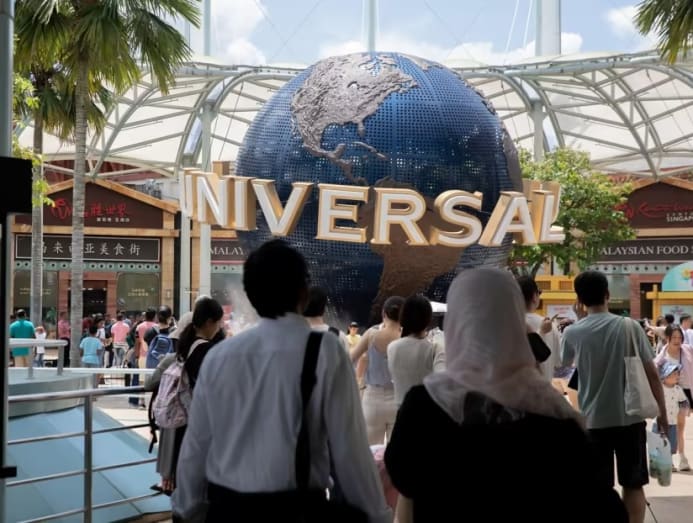
MORE PURPOSEFUL TRAVEL POST-COVID
For 80-year-old Australian Julie Broderick and her friend, Jennifer Carson, 58, Singapore is a four-day-long stopover before they head to Paris, France.
While it is Ms Carson’s first trip here, Ms Broderick is familiar with Singapore, having first visited the island by ship in 1965, the year it gained independence.
“(Jennifer) wasn’t even born yet when I first came to Singapore … I’ve seen the way this country has grown and beaten the odds. Every time there’s something new and different, that’s why I’m always excited to bring family and friends,” said Ms Broderick, a retiree.
She may not be able to recall the number of times she has been here, but Ms Broderick remembers fondly her solo trip to Singapore while in her 70s before the pandemic.
“It’s extremely safe here … Everyone is friendly, it’s so clean and amazing,” she said.
Women who travel solo, like Ms Broderick did in an earlier trip, have been described as a “rich area of opportunity (for Singapore) to tackle” by STB’s current chief executive Keith Tan during the STB Tourism Industry Conference 2023 on Apr 5.
In response to queries from TODAY then, Mr Chang Chee Pey, assistant chief executive of STB’s marketing group, said the board has crafted 10 traveller portraits that represent the country’s target audience. They are:
- Special Occasion Traveller
- Active Holiday Planner
- Family Getaways
- Entertainment Seeker
- Outdoor Adventurer
- City Explorer
- Sports-Mad Nomad
- Culinary Explorer
- Work-life Integration
- Wellness Seeker
While female solo travellers are not among the 10, their needs are captured in some of these portraits, he added.
Mr Tan also shared the board’s outlook for Singapore’s tourism for 2023 and beyond during the conference, calling 2023 “the year we return to our pursuit of quality growth”.
To do so, STB said it will focus on 3 “Rs” — redefining our destination; reconnecting with our fans; and reinventing our industry.
The 3 “Rs” are timely, experts told TODAY, as travel habits have changed post-pandemic, and the tourism industry needs to adapt.
Mr Joydeep Chakraborty, chief strategy officer at travel platform Traveloka, said: “The pandemic has pushed a connected world, and travellers — with their tech savviness — are expecting more from the tourism industry.”
Noting how pandemic-induced lockdowns have had a positive impact on the natural environment, such as cleaner air, Mr Chakraborty said travellers are now more environmentally conscious and are keen to reduce their carbon footprint, for example.
COVID-19 had also cast a spotlight on mental health and personal well-being, which has transformed how people travel, said experts such as Ms June Ko, executive director and vice-president of International Association of Amusement Parks and Attractions Asia Pacific Operations.
“The limitation of travel during the pandemic has made individuals realise the intrinsic value of travel,” she said.
“The pandemic has reinforced the need for leisure, to travel and visit attractions as these activities allow people to relax, dive into new experiences and rediscover ways to be connected to others.”
When it comes to the length and type of travel people will opt for as COVID-19's hold on the world wanes, experts told TODAY that single-destination trips are all the rage.
Revenge travel — to make up for lost time — is here to stay, albeit on a smaller scale, said Mr Christopher Khoo, the managing director of tourism consultancy MasterConsult Services.
“Don’t discount the power revenge travel will have on tourism as people are hungry to leave … I think it may continue as far as end-2024,” he said.
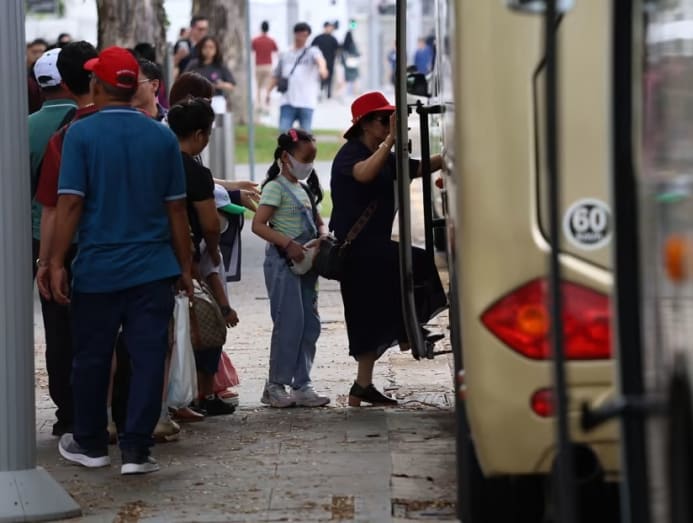
“But with people concerned about the current economic situation and global uncertainties, the impact of revenge travel and increased tourism spending might be muted.”
Deloitte Singapore's transportation, hospitality and services sector leader James Walton said: “The increased cost and lack of availability of flights means that the cost of flight tickets is surging as airlines struggle to keep up with the demand surge. This makes travellers pick their routes and stopovers extra carefully.”
Noting that Singapore had been a short-stop destination of two to five days, the high cost of flights might make Singapore a less attractive option as compared with a one-location vacation.
AFTER INTEGRATED RESORTS … WHAT’S NEXT?
Described as a “game changer” for Singapore’s tourism market, Marina Bay Sands and Resorts World Sentosa opened in 2010 to much fanfare.
“Integrated resorts were unique to Singapore, having a casino with a hotel and other facilities like dining and retail for everyone, including families,” said Mr Khoo.
With their opening, Singapore’s tourism saw an immediate boom — tourism receipts grew year-on-year by 18 per cent in 2011 as compared with 2010, hitting a then-record high of S$22.3 billion (US$16.8 billion).
This is because the IRs have a symbiotic relationship with Singapore’s wider tourism promotion efforts, said Lee Kuan Yew School of Public Policy Associate Professor in Practice Terence Ho.
“The attractiveness of Singapore as a destination draws more visitors to the IRs, while the IRs in turn contribute towards Singapore’s branding and attractiveness,” he added.
And while there have been ups and downs for the IRs here — largely due to the pandemic halting international travel — results for 2022 show the two resorts as one of the factors leading Singapore’s tourism economic recovery.
In the first quarter of 2023, Marina Bay Sands' net revenue more than doubled to US$848 million as compared with the same period in 2022. Mass gambling revenue also hit an all-time record of US$549 million at the casino.
As for Resorts World Sentosa, revenue in the first half of 2022 more than doubled that of the same period in 2021, from S$512.5 million to S$1.1 billion.
This was due to the rebound in travel, it had said then.
These earnings results are not surprising considering how China and other countries have reopened their borders, allowing high net-worth tourists to gamble in Singapore, said industry observers.
However, Mr Walton of Deloitte Singapore noted that one reason for the spike in gambling revenue could be the slow opening of Macau — the world’s biggest gambling hub — which pushed tourists to Singapore to satisfy their gambling urge.
As Macau opens up, tourists may give Singapore a miss and head to the Chinese territory instead.
But it’s not just competition from Macau that Marina Bay Sands and Resorts World Sentosa need to watch out for — the success of Singapore’s IR model has other countries planning to do something similar.
Japan recently announced that its first IR is set to open in Osaka in 2029; Thailand has just started a debate on legalising casinos in the country.
“For Singaporean, Malaysian and Indonesian gamblers, the Singapore IRs will always be the preferred options. However a legalised Thailand casino industry would definitely affect Singapore,” said Mr Walton.
He pointed to a Maybank estimate that the opening of a casino in Thailand could “potentially cost Singapore up to 25 per cent of gaming revenue”.
“Japan – being so far away and not as accessible to Chinese tourists – would have less of an impact,” he said.
However, Mr Benjamin Cassim, a senior lecturer in hospitality and tourism management at Temasek Polytechnic, added that once the attractiveness of a new integrated resort dies down, Singapore’s IRs can expect to get back to a “business as usual phase”.
“Both the IRs offer very strong propositions in terms of not only the casino product, but also the combination of top quality accommodation, food and beverage, retail and entertainment. These make up the overall competitive advantage for Singapore when it comes to high touch service delivery and holistic visitor experiences,” said Mr Cassim.
It is for this very reason that experts like him said that it is crucial that Marina Bay Sands and Resorts World Sentosa continue to upgrade their offerings and experiences — something that they are already doing.
Both IRs have committed a total of S$9 billion in investment into upgrading non-gaming facilities. In exchange, the government has granted both integrated resorts exclusivity for their casinos up till end-2030.
As part of the commitment, Resorts World Sentosa is expanding its theme park Universal Studios Singapore and the S.E.A Aquarium, which will be completed in 2024. Two additional hotels are also part of the enhancements, though their completion date has not been announced.
Similarly, Marina Bay Sands is set to build a fourth tower with a 15,000-seater entertainment area and about 1,000 more hotel rooms, among other new expansions.
However, the IR's expansion plans have been delayed a couple of times — it had cited the pandemic's disruption to the construction industry as the reason behind its first delay.
They are now expected to start by April 2024 and complete by 2028.
Marina Bay Sands also has an additional S$1.33 billion reinvestment programme to upgrade its hotel services, such as its suites, fine dining concepts and wellness offerings.
More than 850 hotel rooms in Towers 1 and 2 have been upgraded in the first phase of its rejuvenation programme, the hotel announced on Apr 27, and it will be increasing the number of suites in the two towers from 137 to 422 by the end of 2023.
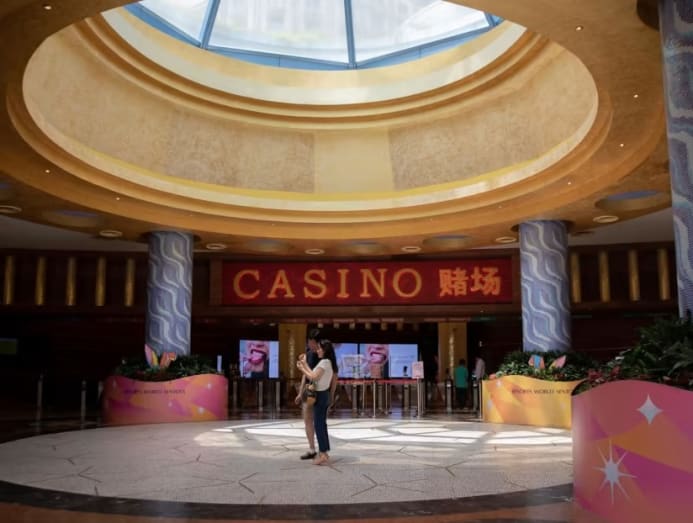
Renovation work at Tower 3, the hotel lobby and the SkyPark will begin after that.
While the IRs are enhancing their products, Dr Kevin Cheong, managing partner at Syntegrate, a tourism and destination development consultancy, noted that they could do more to better integrate themselves with neighbouring stakeholders.
“Resorts World Sentosa can be even more integrated with Sentosa, VivoCity and in the future, the Pulau Brani precinct (also known as the Greater Southern Waterfront) as a holistic destination; and, Marina Bay Sands, together with the central business district, Gardens by The Bay and Marina Bay, can work as an integrated multi-dimensional destination.”
This could create a more encompassing destination, which if packaged well, can encourage tourists to stay longer and to indulge in these different destinations within Singapore, Dr Cheong added.
IRs are not the only ones that need rejuvenation; other attractions must also constantly keep themselves refreshed, said experts.
Citing Bird Paradise — the upgraded former Jurong Bird Park — which is set to open on May 8 with much fanfare as an example, they said that this will keep tourists coming to Singapore again to see what are its latest offerings.
Such constant renewal is crucial for the tourism industry since Singapore’s small size limits its ability to build mega-attractions that are land intensive.
Mr Khoo added that the pandemic also has a part of play in the dwindling options of attractions to adapt in Singapore.
"Pre-pandemic, everyone was bubbling with ideas about the next new attraction ... many ideas are adopted from around the world. But the pandemic put innovation on hold," he said.
Mr Walton noted, however, that the issue of land constraint can be bypassed: “(An) interesting development is Disney announcing that its first cruise in Southeast Asia will set sail from Singapore — this is an example of how Singapore can have another attraction without taking up any more land — by being a port for these exciting cruise ships."
In tandem with such upgrades, Singapore must also continue to improve its service quality and the overall experience for visitors, said Mr Khoo of MasterConsult Services.
“Look at our zoo, for example. People say they have a zoo at home too, and may question why visit Singapore’s? But we provide a different product with variations such as the Night Safari and River Wonders which makes us different and able to attract people,” he added.
And with a growing trend towards eco-tourism, Mr Chakraborty of Traveloka pointed out that nature-based recreation options such as nature and heritage learning journeys and low-impact eco-accommodations are included in Urban Redevelopment Authority's long-term land use plan.
“Parts of the Southern Islands could be used to pilot new recreation and tourism concepts such as nature and heritage learning journeys, low-impact eco-accommodations and leisure activities, and over the next few decades, Sentosa and Pulau Brani will be transformed into a destination with leisure and tourism offerings,” he said.
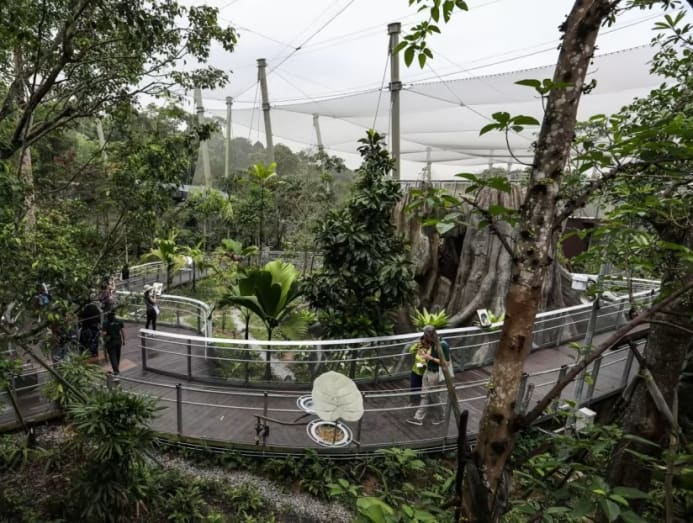
BETTER PACKAGING AND MARKETING
However, the tourism industry cannot just rely on upgraded attractions to draw visitors, said the experts.
“The reality is that Singapore does have a good and well-appointed range of visitor offerings and experiences," said Mr Cassim of Temasek Polytechnic.
These include strong offerings across the hospitality, food, leisure segments as well as in both outdoor and indoor wellness activities, cruise holidays and heritage experiences, among others, he added.
“The key is really to present these to the right markets and at the right time … because destination Singapore operates at price levels that are very different compared to popular destinations in the region.”
Since 2017, Singapore has strived to capture tourists’ imagination with the tagline “Passion Made Possible”. It embodies “the spirit of the nation in a way that builds affinity, affiliation and top-of-mind recall for choosing Singapore as a destination to visit and invest in”, STB and the Economic Development Board had said at the launch.
Various marketing campaigns have also been launched in the past few years to lure tourists here.
Last September, STB announced an S$8 million fund for tourist attractions, hotels and restaurants to promote the city state as a choice destination under the SingapoReimagined Marketing Programme — building on an existing S$20 million Marketing Partnership Programme launched in 2020.
More recently, the board announced during the STB Tourism Industry Conference 2023 its refined target audience profiles, as well as a S$10 million Singapore On-screen Fund, which will support TV and film projects featuring the island for global audiences.
While there may be several audience profiles and initiatives in place targeted at different tourist segments, marketing and tourism experts said it would not muddle Singapore’s image. In fact, specialised and targeted marketing is the way to go, they added.
Mr Kevin Wee, a senior lecturer from Nanyang Polytechnic’s School of Business Management, said: “Instead of focusing on visitors from a specific country or demographic group, they can now run targeted campaigns for specific archetypes based on latest market trends, technological fads or even market conditions.
“This also gives them the flexibility to roll out targeted campaigns that allow one destination to cater to a few specific groups, or for a specific group to visit different destinations within a customised tour.”
Mr Khoo pointed to fast fashion retailer Shein’s highly successful strategy — it has relied on hyper-targeted social media marketing — as something which Singapore can adopt in trying to reach out to multiple audiences.
Such specialised marketing allows Singapore to reach out to potential visitors better, and showcases how it has everything for everyone, he added.
Does Singapore need a better tagline?
Malaysia Truly Asia, Amazing Thailand, WOW Philippines — catchy taglines have etched these countries in our minds. But what about Singapore’s Passion Made Possible?
The slogan drew mixed reactions when it was launched in 2017 — with some people telling TODAY that it is too “vague” and others saying it could become a national slogan.
While experts said tourists are not drawn to catchy taglines alone, they had mixed views about whether Singapore’s Passion Made Possible needs a refresh.
Mr Wee of Nanyang Polytechnic said: “When STB launched the brand in 2017, it was meant to go beyond being just a tagline — the focus was on authentic reasons that made Singapore special.
“STB’s comprehensive and integrated marketing strategy and approach has definitely proved to be more effective (than a tagline). With that said, more signature campaigns, taking into consideration STB’s customer profiles, can be developed in line with STB’s overall strategy.”
Agreeing, Dr Cheong of Syntegrate said: “Branding needs time to establish a following and resonance … ‘Passion Made Possible’ may have different connotations as a slogan or strapline, but we need to continue to build on it, maybe with a fresh perspective rather than change it completely.”
However, he also noted a good tagline should not only be catchy, but should “withstand the test of time, language and interpretation” and deliver the brand promise — namely, what visitors can get by coming to Singapore.
It is for this reason that some experts like Singapore Management University Lee Kong Chian professor of marketing Dr Kapil Tuli say Singapore needs to be looking for a new tagline.
“Something catchy will make it easier for tourists to recall Singapore and remember it as a destination,” said Dr Tuli.
“But it takes time to create something that will allow Singapore to distinguish itself from other countries while capturing the essence of Singapore … With changes in what tourists are looking for, we should start thinking and perhaps look at a refresh of our tagline next year.”
To better distinguish Singapore from its neighbours beyond the dollar price point, the country’s heritage and culture could be packaged and marketed better, experts told TODAY.
Dr Cheong said: “Singapore’s multi-cultural modernity may be perceived as a lack of cultural distinction, especially when compared with Thailand, Vietnam, Indonesia, Japan and Korea.
"Therefore I question if we are selling ourselves short by not distinguishing our cultural and experiential precincts such as Chinatown, Kampong Glam, Little India, Sentosa, Mandai and, of course, Orchard Road.”
He suggested that Singapore better promote experiential clusters or precinct distinctiveness which may take at least two nights to immerse in.
Through such packages, Dr Cheong said that there is greater opportunity for Singapore to tell its multicultural and multiracial history while giving tourists a reason to stay longer, or to revisit Singapore.
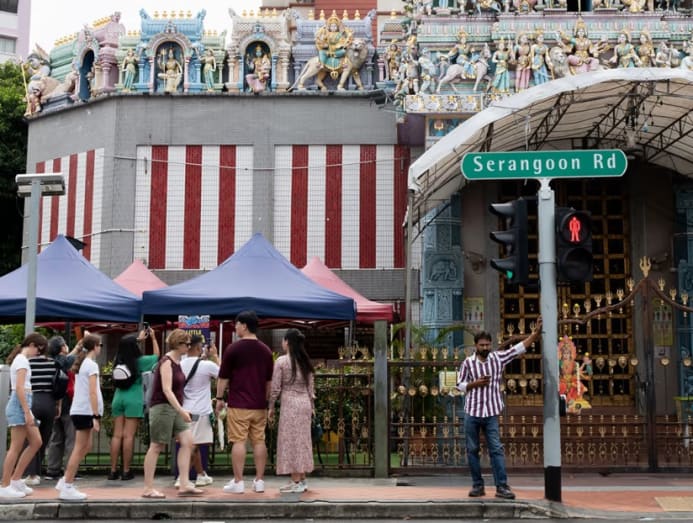
Assoc Prof Ho of the Lee Kuan Yew School of Public Policy added that with land constraints, tapping into Singapore’s “software” in terms of its heritage and food culture could attract tourists.
“Much of our history and heritage is encapsulated in our cuisine — we can tell stories about the origins and special meaning that certain dishes have, and showcase the care and craft that go into creating dining experiences.
“It can be argued that Singapore food and culture has similarities with our neighbours, but what can set us apart is how we tell our food story in a way that is evocative and resonates with travellers,” he said.
In the same vein, experts said that Singapore’s push as a wellness hub needs some improvement by packaging relevant activities together.
“While this messaging is great, especially in terms of the green spaces that we have, it has not translated into personalised and specially curated wellness holiday programmes that visitors can and want to sign up for,” said Mr Cassim.
He added that various neighbouring countries have three to seven-day retreats that are combined and made easily available for tourists.
In Singapore, wellness activities come across as “just a series of disparate activities, programmes and green spaces that visitors can enjoy”, he said.
“The responsibility of when, how and the curation of the wellness experiences are pretty left in the hands of the visitor. We (Singapore) are also missing a ‘bucket list’ of urban wellness experiences that becomes a must-do experience for visitors.”
Dr Tuli added that Singapore cannot compete with lower-cost wellness activities such as spa treatments that are available in neighbouring countries like Thailand and Indonesia.
"That's why it's crucial to market ourselves and differentiate what we have to offer from other countries."
This includes promoting Singapore's wellness facilities as premium and luxurious.
Noting that wellness travellers spend more than the average traveller — 35 per cent more, according to a report by the Global Wellness Institute in 2021 — distinguishing Singapore’s wellness facilities from neighbouring countries is crucial, said Dr Wong King Yin, a senior lecturer in marketing at Nanyang Business School.
However, the image of Singapore as a wellness hub does not quite gel with a country associated with being fast-paced and high-pressure.
While changing perceptions can be a slow and arduous process, Dr Wong says Singapore is in the right direction and has the makings of a wellness hub.
It is easier to attract wellness tourists looking for medical services, considering Singapore’s image of professionalism and cleanliness. But for tourists looking for a balance between city life and wellness, Dr Wong said Singapore has an advantage it can leverage on — its image as a Garden City.
“We have our fast-paced city life, but that’s merged with pockets of nature and trees around which you can enjoy its beauty, relax and still appreciate … that is unique to Singapore,” she said.
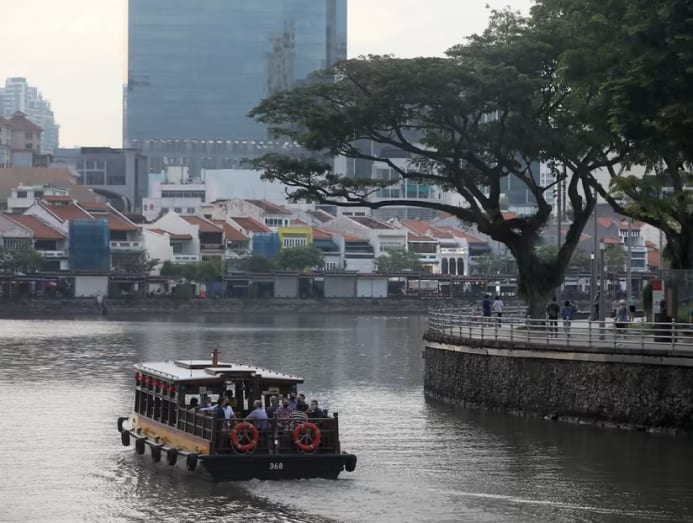
"REFRESHED" MARKETING CAMPAIGN TO BE LAUNCHED: STB
STB will launch a refreshed marketing campaign under its Passion Made Possible tagline after it retires the SingapoReimagine campaign in Sept this year, said a spokesman in response to TODAY's queries.
Launched in November 2020, SingapoReimagine aimed to rally local and global communities to reset and revive tourism.
"The new campaign will highlight unique experiences that are made possible only in Singapore, and how we turn ordinary moments into extraordinary experiences. It will be bold and fresh, positioning Singapore as a choice place to visit," said the spokesman.
STB added that the new 10 traveller portraits will be part of the audiences it will target as part of the campaign.
To TODAY's query on whether STB has a target length of stay for tourists given its aim of shedding Singapore's "stopover" image, the spokesman said that it does not set such targets.
"Part of our strategy is to position Singapore as a 'stayover' rather than a stopover. We encourage travellers to view Singapore as a destination in our own right, and work with tour providers to curate 'stayover' products."
The spokesman also said that STB will continue to pursue "quality tourism", which prioritises attracting quality visitors, growing revenue, and boosting Singapore’s appeal as a leading city for both business and leisure.
"To achieve quality tourism, we anchor high quality and first-of-its-kind tourism concepts in Singapore, while refreshing and rejuvenating existing offerings.
"We also tap our global network of strategic partners to develop tourism products, deepen market penetration and capture mindshare for visitors to Singapore."
This article was originally published in TODAY.




.jpeg?itok=w0JKXXjz)









